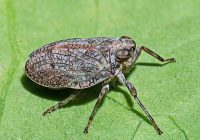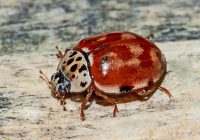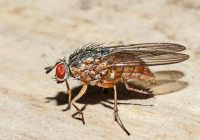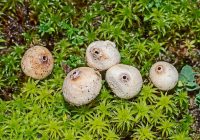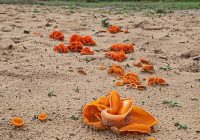Dr Phil Smith’s Wildlife Notes
November 2022
Just for a change, November was a rather damp month, with measurable rain on as many as 18 days. Even so, rainfall amounts for the region were about average. Therefore, the sand-dune water-table rose by only 5 cm, as measured at the Devil’s Hole. It was a generally mild month here with no frost at all. This was also the national picture and, according to the Met. Office, it was the third warmest autumn ever for the UK. We may also be on track for the hottest year in the UK since records began – yet another indication of climate change.
I usually expect to see a few insects hanging on into November but this year was exceptional. Pete Kinsella got in touch on 29th to tell me he had recorded nine species of hoverflies on Ivy at Blucher Street, Crosby. I couldn’t compete with that total but did find six species on the Hesketh Road, Marshside, Ivy on 13th. However, my insect highlight of the month, if not the year, was on 4th at Wick’s Path, Formby Point, when I spotted an unfamiliar greyish creature on the sunny fence-line. I had no idea what it was, so I potted it and took it home hoping to find its identity and take photos. It turned out to be a plant-hopper called Issus coleoptratus, a member of the tiny family Issidae, with only two British species. This one is fairly widespread in the south and midlands but rare further north. Mine seems to be the first record for Merseyside and the South Lancashire vice-county. This plant-hopper is unusual in being able to feed on the sap of Ivy, which contains poisons that the insect can detoxify. Another nice find was a Cream-streaked Ladybird on the bridge parapet at Wick’s Lake, together with several hulking Giant Willow Aphids, an attractive fly of the Phaonia group and the menacing larva of a Harlequin Ladybird. I don’t remember seeing a Cream-streaked Ladybird before, though it is said to be locally common, mainly on conifers. Although widespread in England, this species is scarce north of Morecambe Bay.
The absence of frost during the month meant many wildflowers had not packed up for the winter. I counted ten kinds in flower on my way to the Devil’s Hole on 1st. Also nearby was an impressive population of Winter Stalkball, a small stalked puffball resembling a greyish lollypop often seen in the dunes at this time of year. Most commonly found in the South-east, it becomes increasingly coastal further north. Another bonus was a patch of Purple Ramping-fumitory at the top of Range Lane. Although fairly frequent around Formby, this endemic species is Red-listed ‘vulnerable’ in England which means it’s in danger of extinction.
A visit to Freshfield Dune Heath Nature Reserve on 16th began with a Wren singing repeatedly; unexpected at this time of year. Another surprise was Weld in full flower; I usually only see this in mid-summer. Walking past a line of ponds that were either dry or nearly so, I came to an area of bare sand where Gorse had recently been removed. Here were spectacular growths of Orange Peel Fungus, which was new to me. I read that it is widespread but not particularly common. A strikingly red-tipped lichen, probably Cladonia floekeana, was still present in gaps between clumps of Heather where I first found it two years ago.
I chose a fairly high tide to visit Hightown, hoping to see a sizeable wader roost on the far side of the R. Alt. In the event, there were only about 400 Oystercatchers. The usual Curlews must have flown inland. Two Little Egrets arrived as the tide ebbed. Although the tides had not been particularly high, I noted some erosion of the dunes north of the Sailing Club. Compensating for the lack of shorebirds were four Stonechats and a few snatches of typically loud song from a Cetti’s Warbler in the big reedbed. Nowadays, hearing this is a regular event but it wasn’t the case a few years ago. The distribution map in my 1972 Birds of Britain and Europe shows Cetti’s Warbler was restricted mainly to southern Europe extending as far as northern France. It was an extreme rarity in Britain until birds began to breed in Kent in 1971 or 72. It then spread through most of England and Wales. The first Lancashire record was at Marton Mere, Blackpool, in 1990, our first confirmed breeding being at the same place in 2010. Most warblers head south for the winter but this one stays put and can be badly affected by harsh winters.
On 28th, I headed for Ainsdale Sandhills Local Nature Reserve (LNR) to renew acquaintance with the Belted Galloways that graze here during the winter. They took a bit of finding, involving climbing up high dunes and scanning with binoculars. Eventually I caught up with about a dozen of these black-and-white beauties. They are doing a great job improving the condition of the vegetation. What they leave behind is also important. Fresh cow-pats had attracted several Yellow Dung Flies, a couple of Moon Flies and a Phaonia fly. As I mentioned in November 2020, the reserve is also famous for the Ainsdale Dung Beetle, a tiny scarab known only from the Sefton dunes in the UK. It was thought to be extinct until a survey found it again on the Ainsdale LNR in 2017. The beetle is entirely dependent on dung from Rabbits and livestock for its survival. While looking for the cattle, I noticed several Cotoneaster bushes, their red autumn foliage making them stand out in the landscape. These can be invasive and, although there is no indication of a problem at present, it is something to keep an eye on. Finally, I checked out the west-facing garden fences at Falklands Way. Warmed by the late afternoon sun, these had several basking flies including a Common Dronefly and Marmalade Hoverfly. How long will they hang on as the winter closes in?

